Development of Quick Digital Field Recording and Mapping Method of Geological Objects for Hydraulic Engineering
Abstract
:1. Introduction
2. Methods
- (1)
- The 3D real scene terrain is the basis of the geological recording and the 3D analysis. There are two ways to build a 3D real scene terrain model in the SuperMap platform. The first way is to use UAV photos to build the detailed 3D terrain. The other way is to use a digital elevation model (DEM) and scene images to build the large-scale terrain model. The two terrain models show geological information at different scales.
- (2)
- The geological recording can then be carried out on the 3D terrain. The geological objects and the 3D information extracted from images can be recorded according to the real coordinates.
- (3)
- Based on the recording, 3D analysis can be conducted, such as accumulation body estimation and block instability analysis. Multiple methods are integrated to be a hierarchical one to build the whole system.
2.1. UAV Oblique Photography and Modeling
2.2. Data Recording
2.3. Interpreting 3D Information from 2D Images
2.4. Depth in Delaunay Triangulation
3. Development Tools and Requirements
4. Module Integration on Tablet
4.1. Object Recording
4.2. Image Interpretation
4.3. Field Analysis
4.3.1. Accumulation Body Estimation
4.3.2. Block Instability Analysis
4.3.3. Deep Learning-Based Recognition for Rocks
5. Case Study
6. Conclusions
Author Contributions
Funding
Institutional Review Board Statement
Informed Consent Statement
Data Availability Statement
Acknowledgments
Conflicts of Interest
References
- Ey, M.; Sherval, M. Exploring the minescape: Engaging with the complexity of the extractive sector. Area 2016, 48, 176–182. [Google Scholar] [CrossRef]
- Lundmark, A.M.; Augland, L.E.; Jørgensen, S.V. Digital fieldwork with Fieldmove-how do digital tools influence geoscience students’ learning experience in the field? J. Geogr. High. Educ. 2020, 44, 427–440. [Google Scholar] [CrossRef] [Green Version]
- Huang, B.; Jiang, B.; Lin, H. An integration of GIS, virtual reality and the Internet for visualization, analysis and exploration of spatial data. Int. J. Geogr. Inf. Sci. 2001, 15, 439–456. [Google Scholar] [CrossRef]
- Pavlis, T.L.; Langford, R.; Hurtado, J.; Serpa, L. Computer-based data acquisition and visualization systems in field geology: Results from 12 years of experimentation and future potential. Geosphere 2010, 6, 275–294. [Google Scholar] [CrossRef]
- Le, H.H.; Schaeben, H.; Jasper, H.; Görz, I. Database versioning and its implementation in geoscience information systems. Comput. Geosci. 2014, 70, 44–54. [Google Scholar] [CrossRef]
- Yuan, L.W.; Yu, Z.Y.; Luo, W.; Lv, G.N. Geometric algebra for multidimension-unified geographical information system. Adv. Appl. Clifford Algebr. 2013, 23, 497–518. [Google Scholar] [CrossRef]
- De Donatis, M.; Bruciatelli, L. MapIT: The GIS software for field mapping with tablet pc. Comput. Geosci. 2006, 32, 673–680. [Google Scholar] [CrossRef]
- Qiu, J.; Song, W.; Jiang, C.; Wu, H.; Dong, R.M. CGDK: An extensible CorelDRAW VBA program for geological drafting. Comput. Geosci. 2013, 51, 34–48. [Google Scholar] [CrossRef]
- Zhong, D.H.; Li, M.C.; Song, L.G.; Wang, G. Enhanced NURBS modeling and visualization for large 3D geoengineering applications: An example from the Jinping first-level hydropower engineering project, China. Comput. Geosci. 2006, 32, 1270–1282. [Google Scholar] [CrossRef]
- Li, M.C.; Zhou, S.B.; Wang, G. 3D identification and stability analysis of key surface blocks of rock slope. Trans. Tianjin Univ. 2016, 22, 317–323. [Google Scholar] [CrossRef]
- Li, M.C.; Zhang, Y.; Zhou, S.B.; Yan, F.G. Refined modeling and identification of complex rock blocks and block-groups based on an enhanced DFN model. Tunn. Undergr. Space Technol. 2017, 62, 23–34. [Google Scholar] [CrossRef]
- Klingbeil, L.; Eling, C.; Heinz, E.; Wieland, M.; Kuhlmann, H. Direct Georeferencing for Portable Mapping Systems: In the Air and on the Ground. J. Surv. Eng. 2017, 143, 04017010. [Google Scholar] [CrossRef]
- Jo, Y.H.; Hong, S. Three-Dimensional digital documentation of cultural heritage site based on the convergence of terrestrial laser scanning and unmanned aerial vehicle photogrammetry. ISPRS Int. J. Geo-Inf. 2019, 8, 53. [Google Scholar] [CrossRef] [Green Version]
- Ming, J.; Pan, M.; Qu, H.G.; Ge, Z.H. GSIS: A 3D geological multi-body modeling system from netty cross-sections with topology. Comput. Geosci. 2010, 36, 756–767. [Google Scholar] [CrossRef]
- Forno, G.M.; Lingua, A.M.; Russo, S.L.; Taddia, G.; Piras, M. GSTOP: A new tool for 3D geomorphological survey and mapping. Eur. J. Remote Sens. 2013, 46, 234–249. [Google Scholar] [CrossRef] [Green Version]
- Velasco, V.; Gogu, R.; Vázquez-Suñè, E.; Garriga, A.; Ramos, E.; Riera, J.; Alcaraz, M. The use of GIS-based 3D geological tools to improve hydrogeological models of sedimentary media in an urban environment. Environ. Earth Sci. 2012, 68, 2145–2162. [Google Scholar] [CrossRef]
- Touch, S.; Likitlersuang, S.; Pipatpongsa, T. 3D geological modelling and geotechnical characteristics of Phnom Penh subsoils in Cambodia. Eng. Geol. 2014, 178, 58–69. [Google Scholar] [CrossRef]
- Breunig, M.; Zlatanova, S. 3D geo-database research: Retrospective and future directions. Comput. Geosci. 2011, 37, 791–803. [Google Scholar] [CrossRef]
- Weng, Y.H.; Sun, F.S.; Grigsby, J.D. GeoTools: An android phone application in geology. Comput. Geosci. 2012, 44, 24–30. [Google Scholar] [CrossRef]
- Lee, S.; Suh, J.; Park, H.D. Smart compass-clinometer: A smartphone application for easy and rapid geological site investigation. Comput. Geosci. 2013, 61, 32–42. [Google Scholar] [CrossRef]
- Wolniewicz, P. SedMob: A mobile application for creating sedimentary logs in the field. Comput. Geosci. 2014, 66, 211–218. [Google Scholar] [CrossRef]
- Whitmeyer, S.J.; Pyle, E.J.; Pavlis, T.L.; Swanger, W. Modern approaches to field data collection and mapping: Digital methods, crowdsourcing, and the future of statistical analyses. J. Struct. Geol. 2018, in press. [Google Scholar] [CrossRef]
- Tian, Y.; Huang, M. An integrated graphic modeling system for three-dimensional hydrodynamic and water quality simulation in lakes. ISPRS Int. J. Geo-Inf. 2019, 8, 18. [Google Scholar]
- Lee, S.; Suh, J.; Park, H.D. Boreholear: A mobile tablet application for effective borehole database visualization using an augmented reality technology. Comput. Geosci. 2015, 76, 41–49. [Google Scholar] [CrossRef]
- Tian, Y.; Zheng, Y.; Zheng, C. Development of a visualization tool for integrated surface water–groundwater modeling. Comput. Geosci. 2016, 86, 1–14. [Google Scholar] [CrossRef]
- Wang, M.F.; Jiang, Q.A.; Liu, Q.J.; Huang, M. A new program on digitizing analog seismograms. Comput. Geosci. 2016, 93, 70–76. [Google Scholar] [CrossRef]
- Bubniak, I.M.; Bubniak, A.M.; Gavrilenko, O.D. Digital field geology. In: Geoinformatics: Theoretical and Applied Aspects 2020. Eur. Assoc. Geoscient. Eng. 2020, 1, 1–4. [Google Scholar]
- Senger, K.; Nordmo, I. Using digital field notebooks in geoscientific learning in polar environments. J. Geosci. Educ. 2021, 69, 166–177. [Google Scholar] [CrossRef]
- Mallet, J.L. GOCAD: A computer aided design program for geological applications. In Three-Dimensional Modeling with Geoscientific Information Systems; Springer: Dordrecht, The Netherlands, 1992; pp. 123–141. [Google Scholar]
- Nex, F.; Remondino, F. UAV for 3D mapping applications: A review. Appl. Geomat. 2014, 6, 1–15. [Google Scholar] [CrossRef]
- Mauldon, M.; Goodman, R. Rotational kinematics and equilibrium of blocks in a rock mass. In: International Journal of Rock Mechanics and Mining Sciences & Geomechanics Abstracts. Pergamon 1990, 27, 291–301. [Google Scholar]
- Zhang, Y.; Li, M.; Han, S. Automatic identification and classifcation in lithology based on deep learning in rock images. Acta Petrol. Sin. 2018, 34, 333–342. [Google Scholar]
- Deng, J.; Dong, W.; Socher, R.; Li, L.; Li, K.; Li, F. Imagenet: A large-scale hierarchical image database. In Proceedings of the IEEE Conference on Computer Vision and Pattern Recognition, Miami, FL, USA, 20–25 June 2009; IEEE: Piscataway, NJ, USA, 2009; pp. 248–255. [Google Scholar]

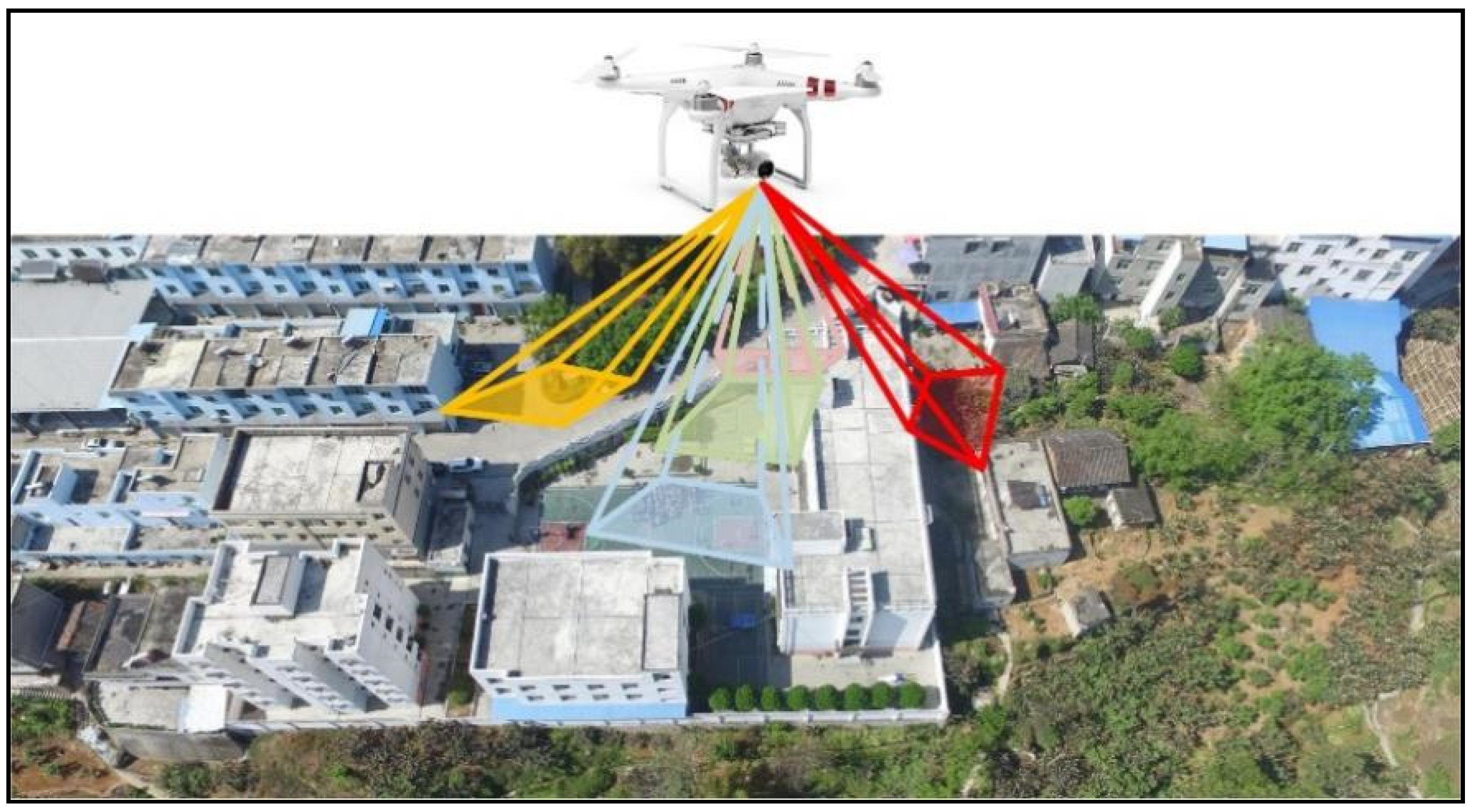

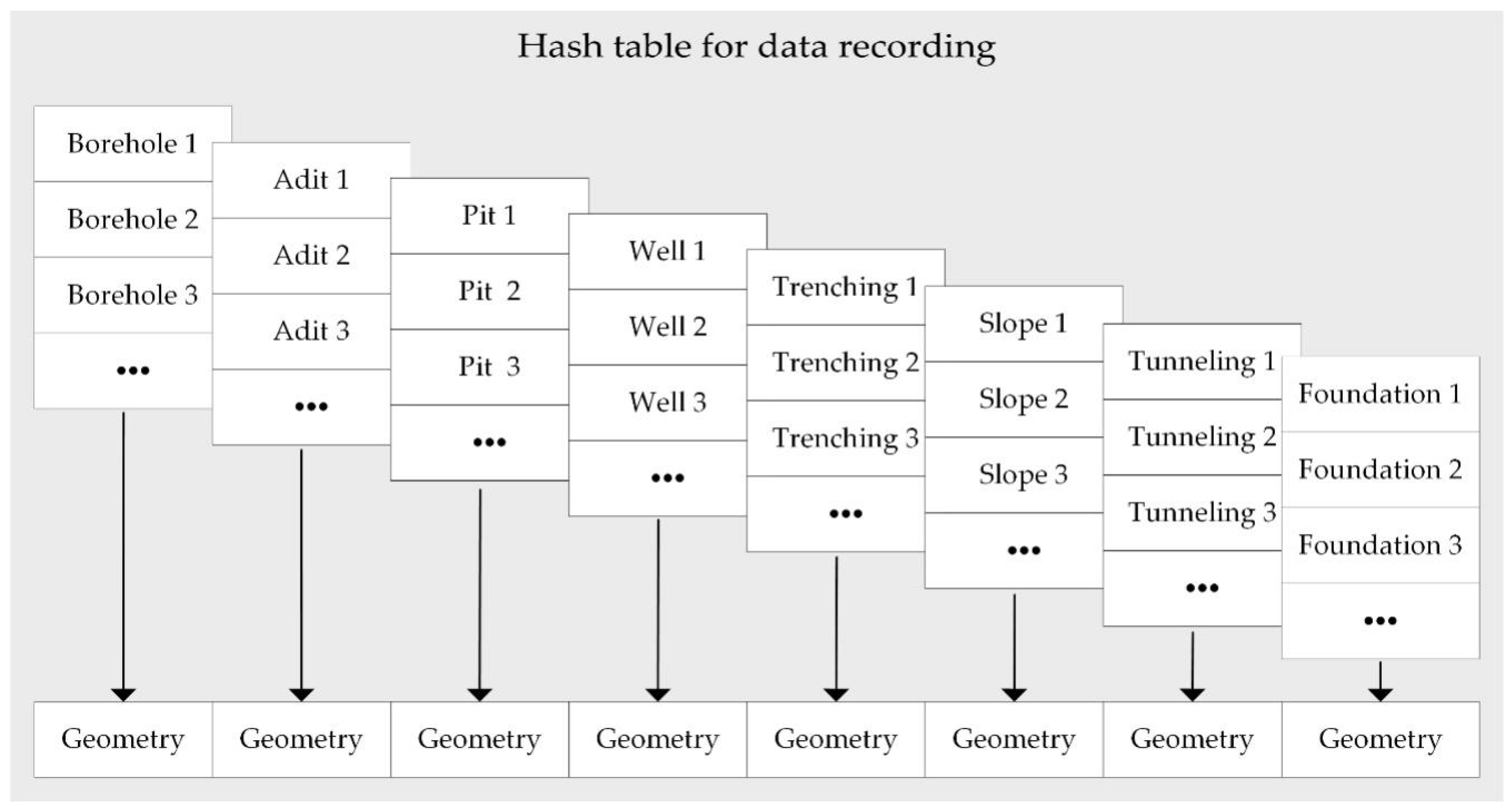

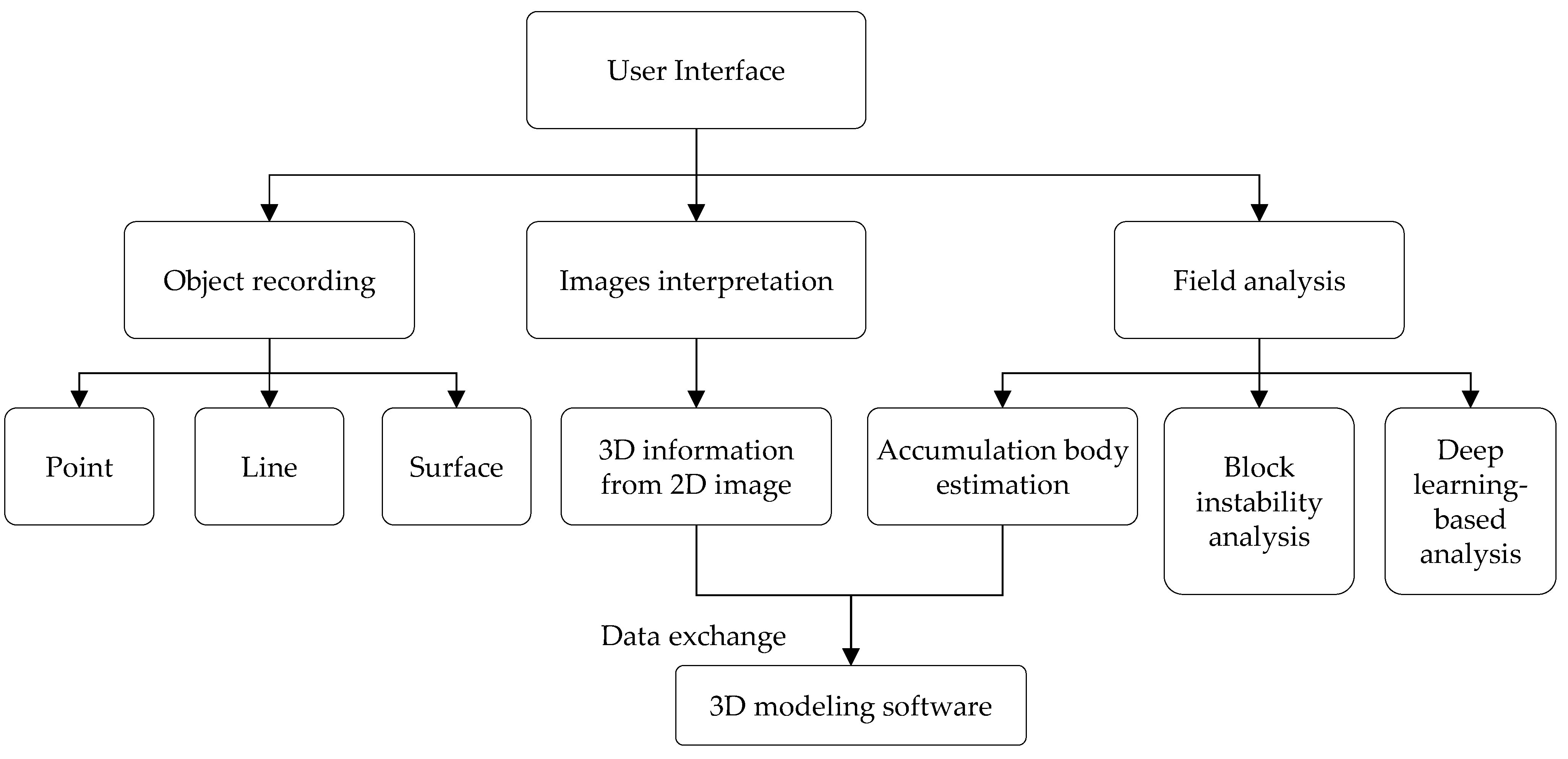
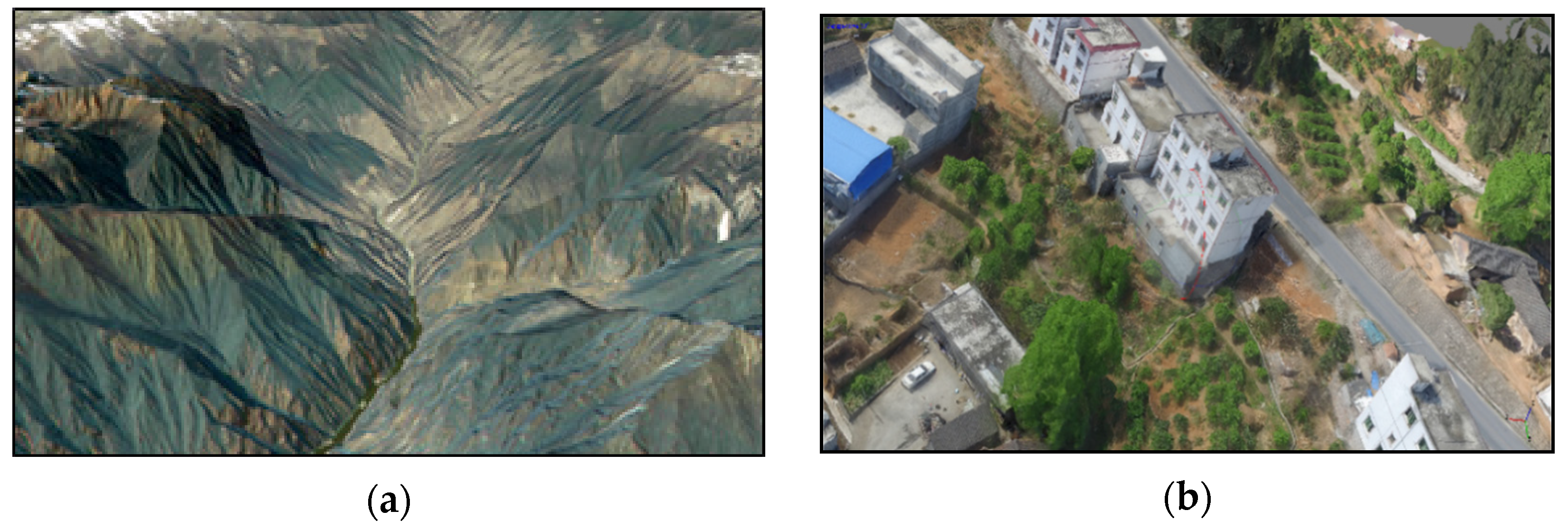

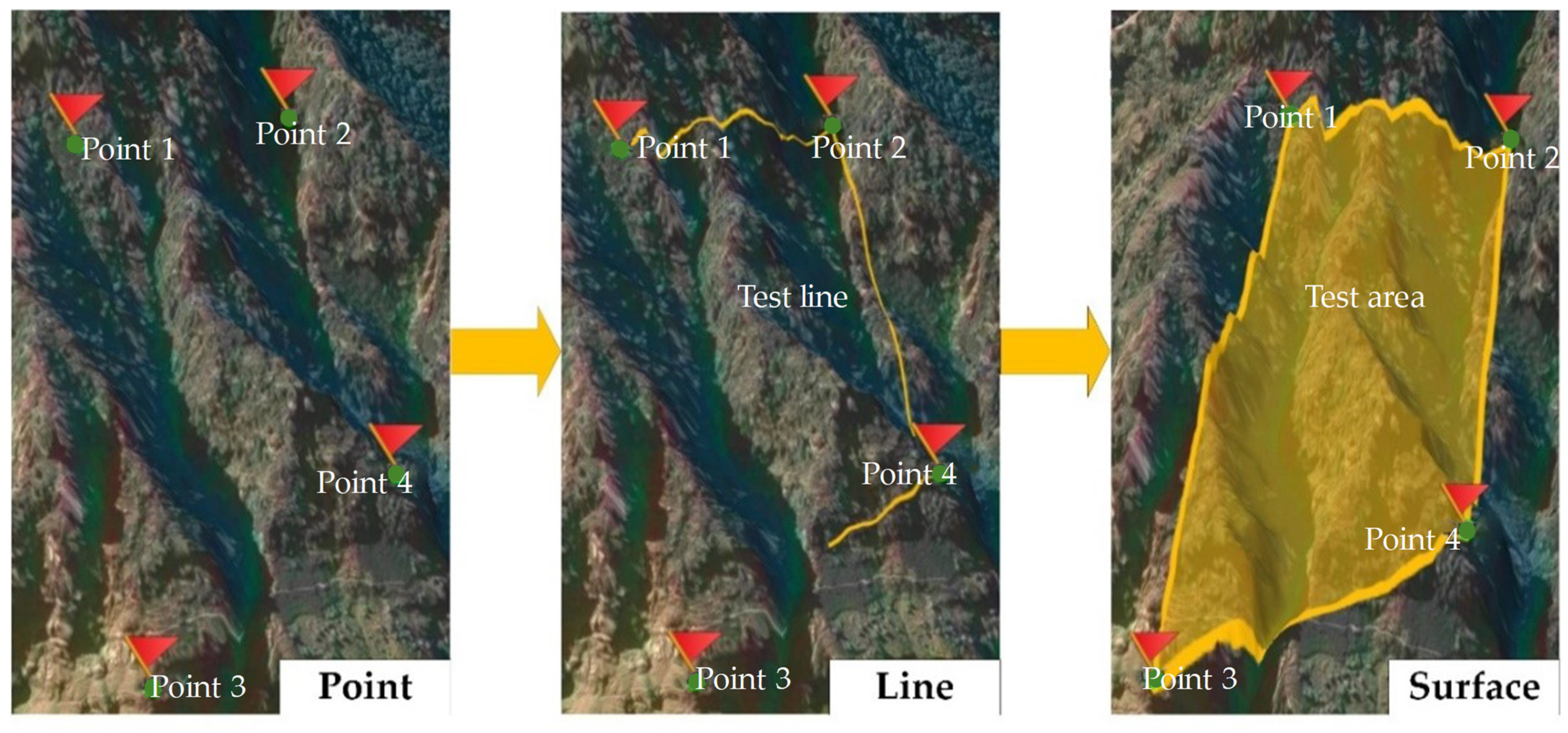
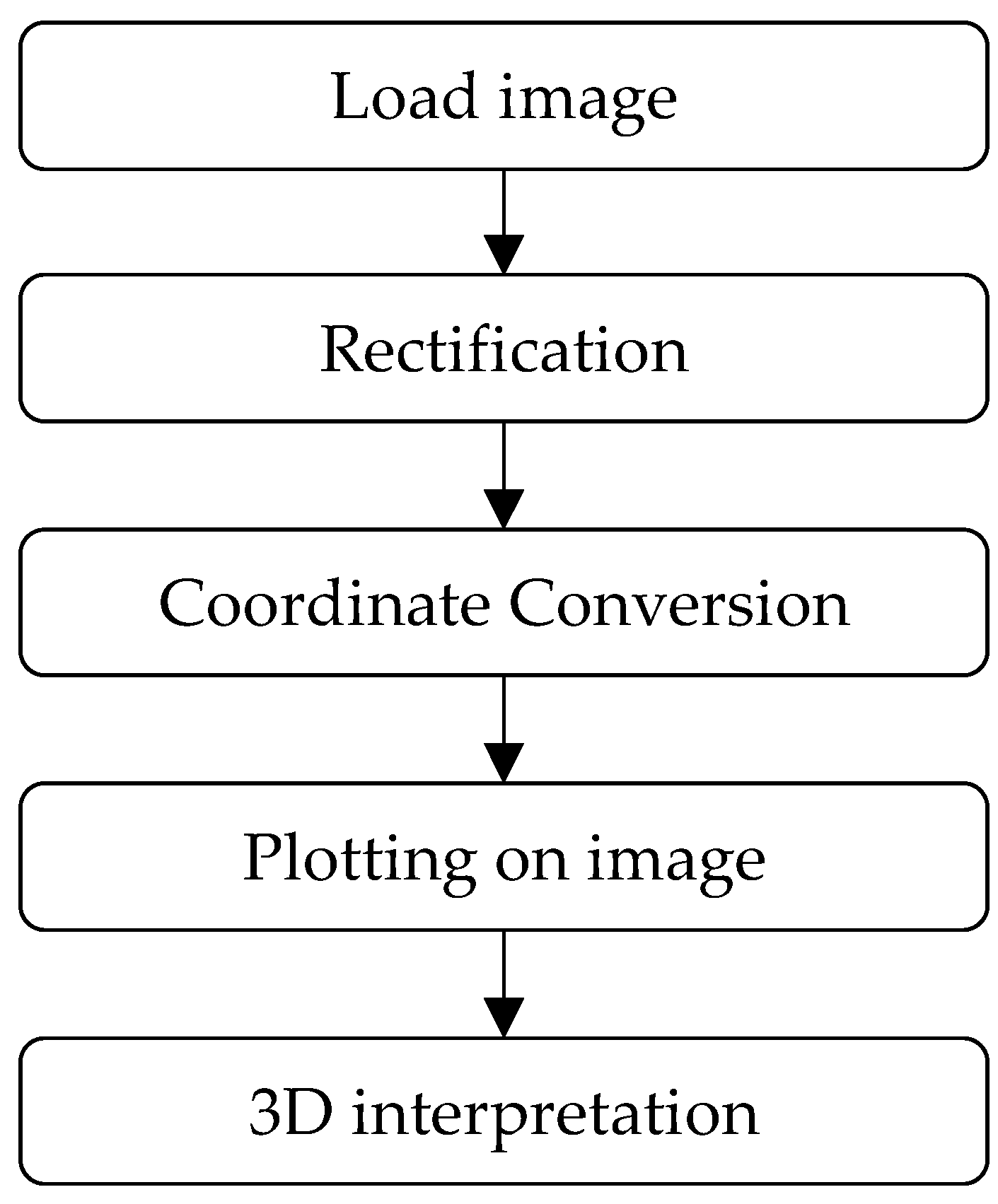
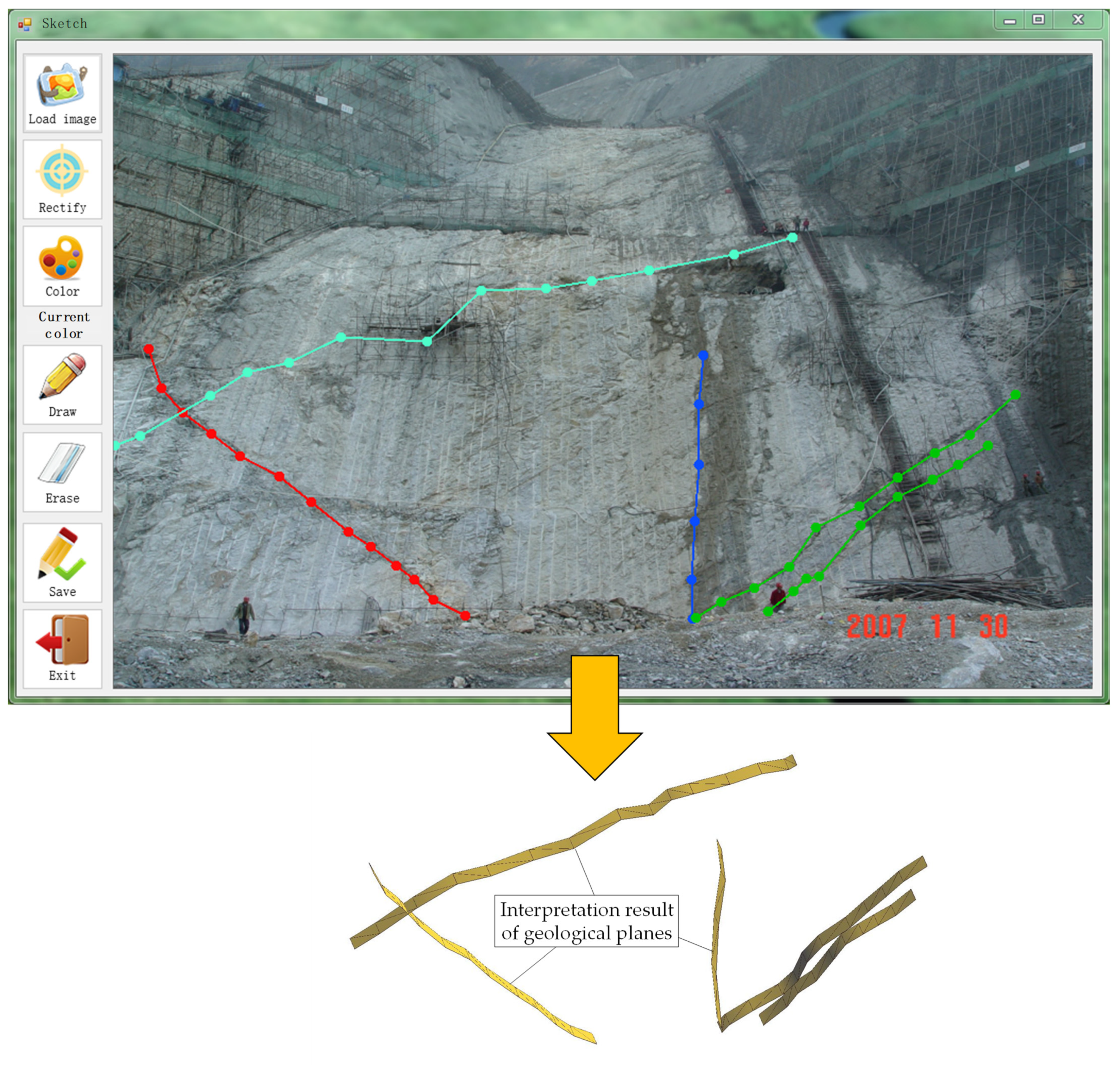
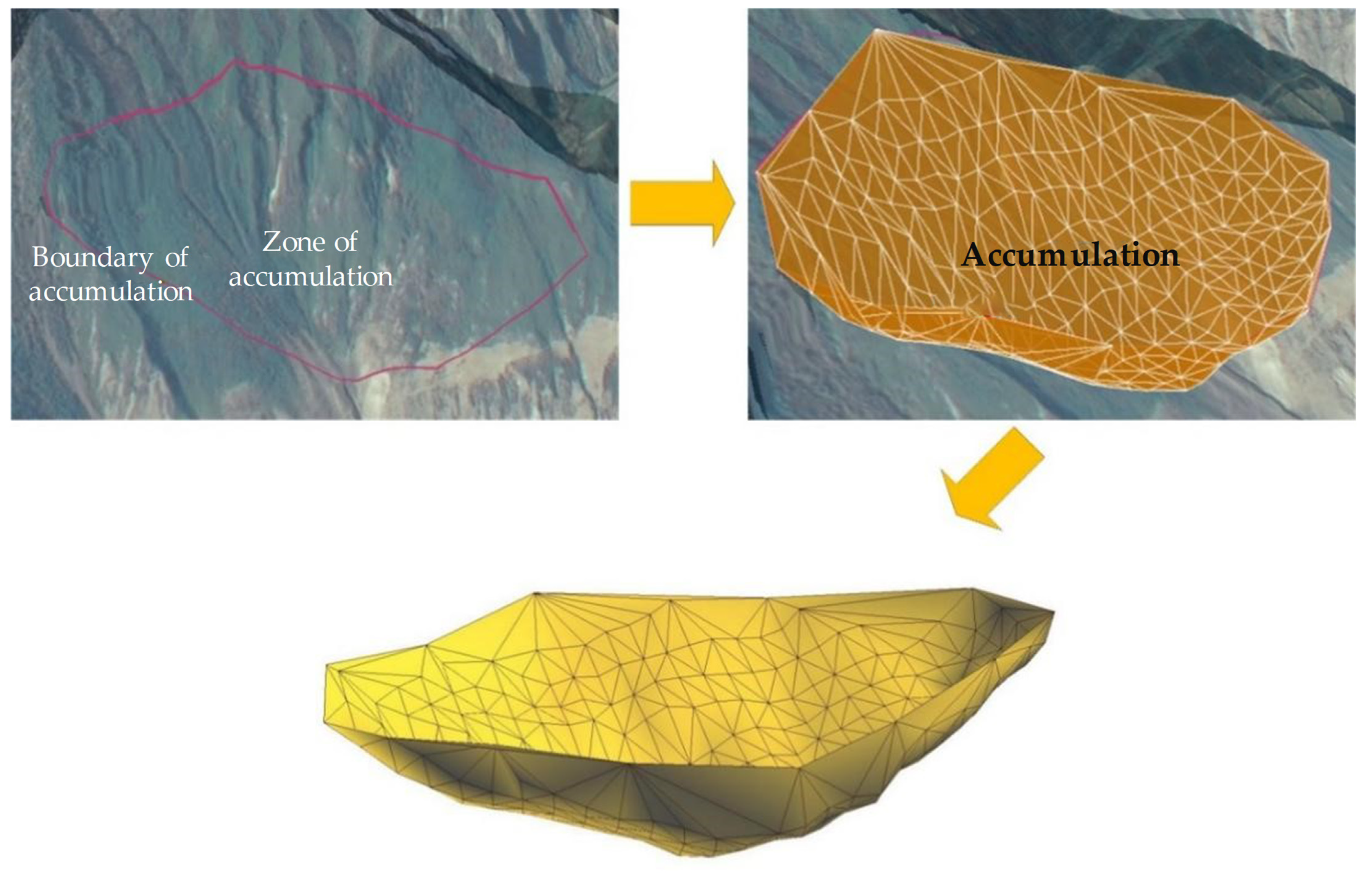


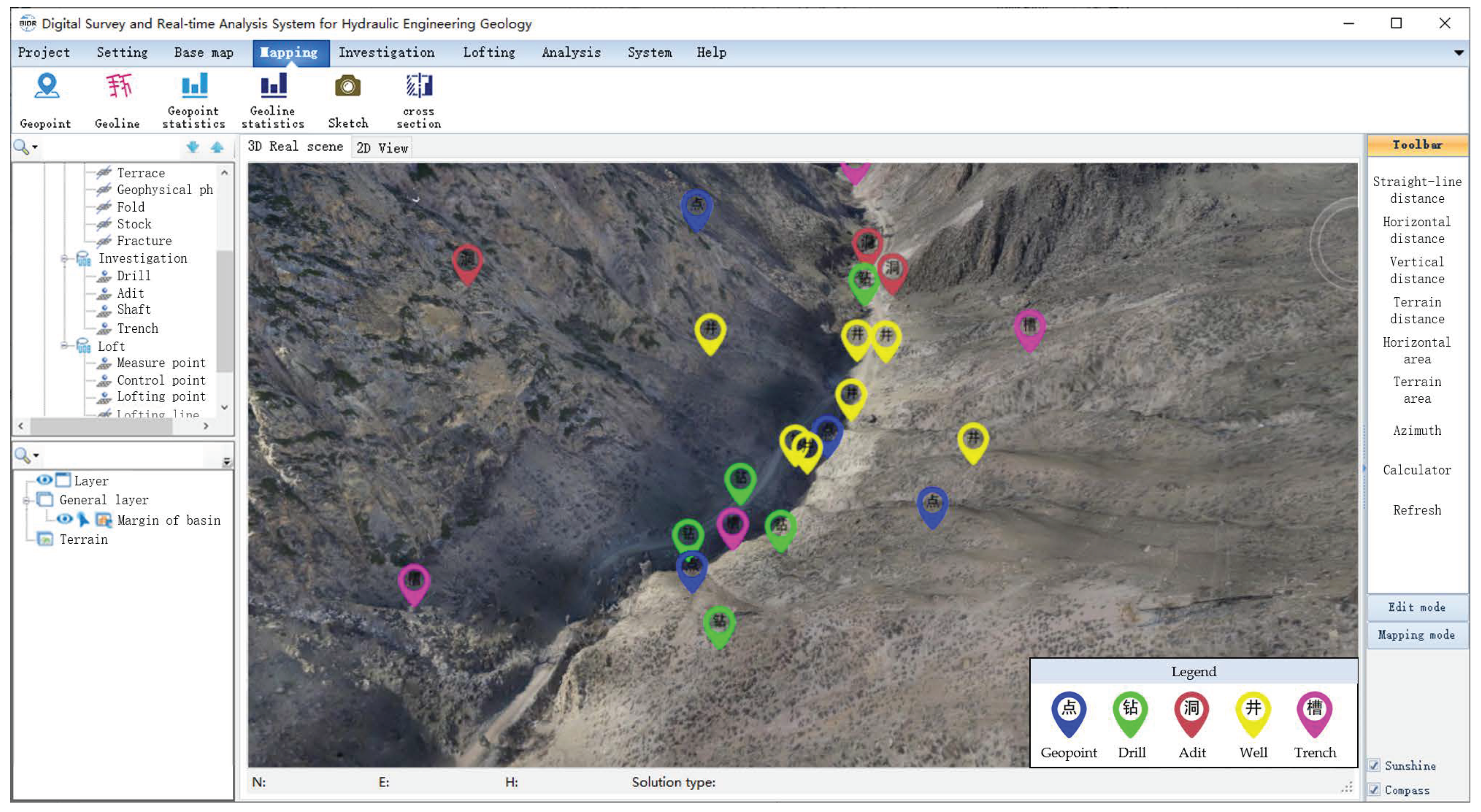

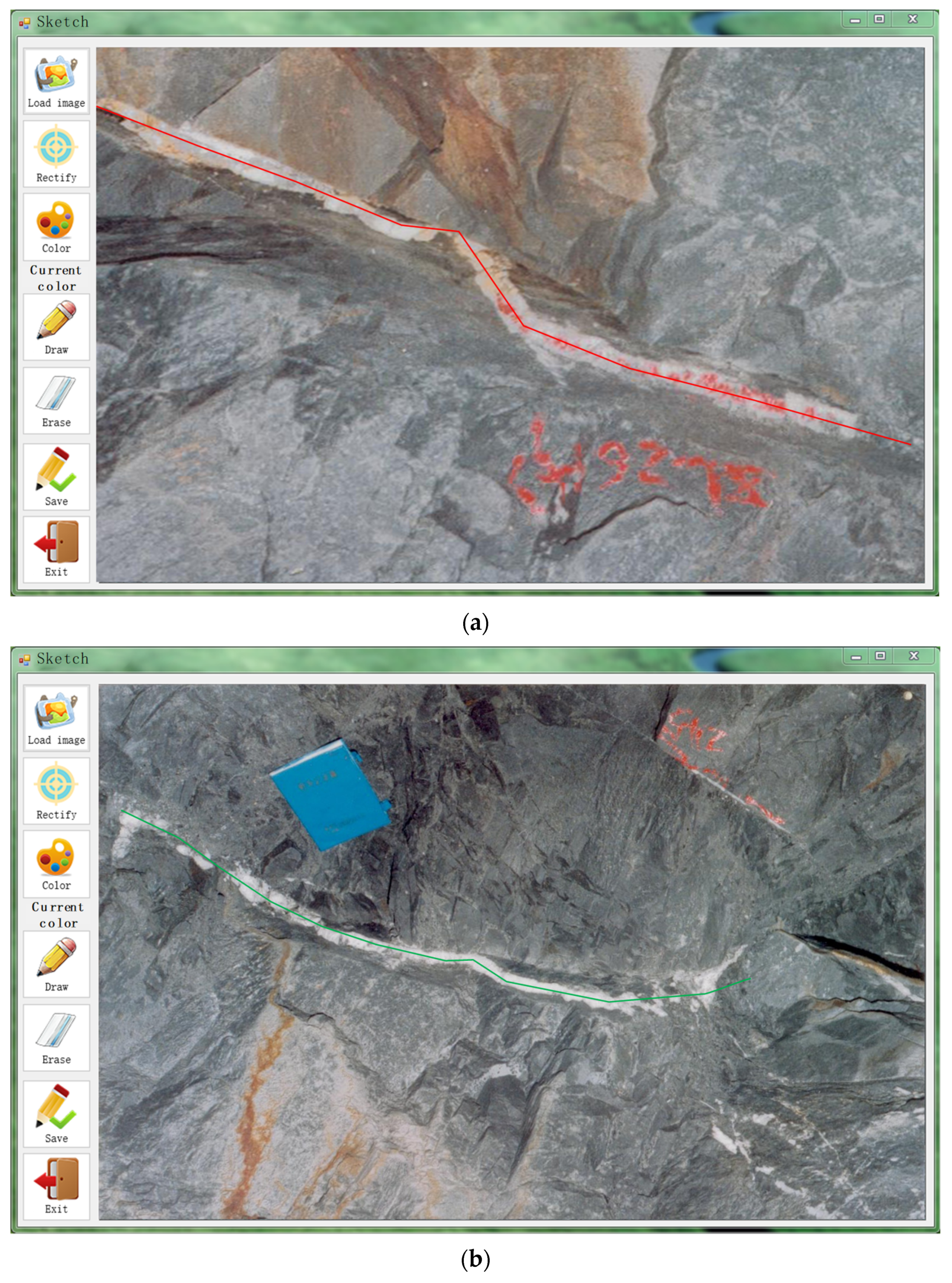
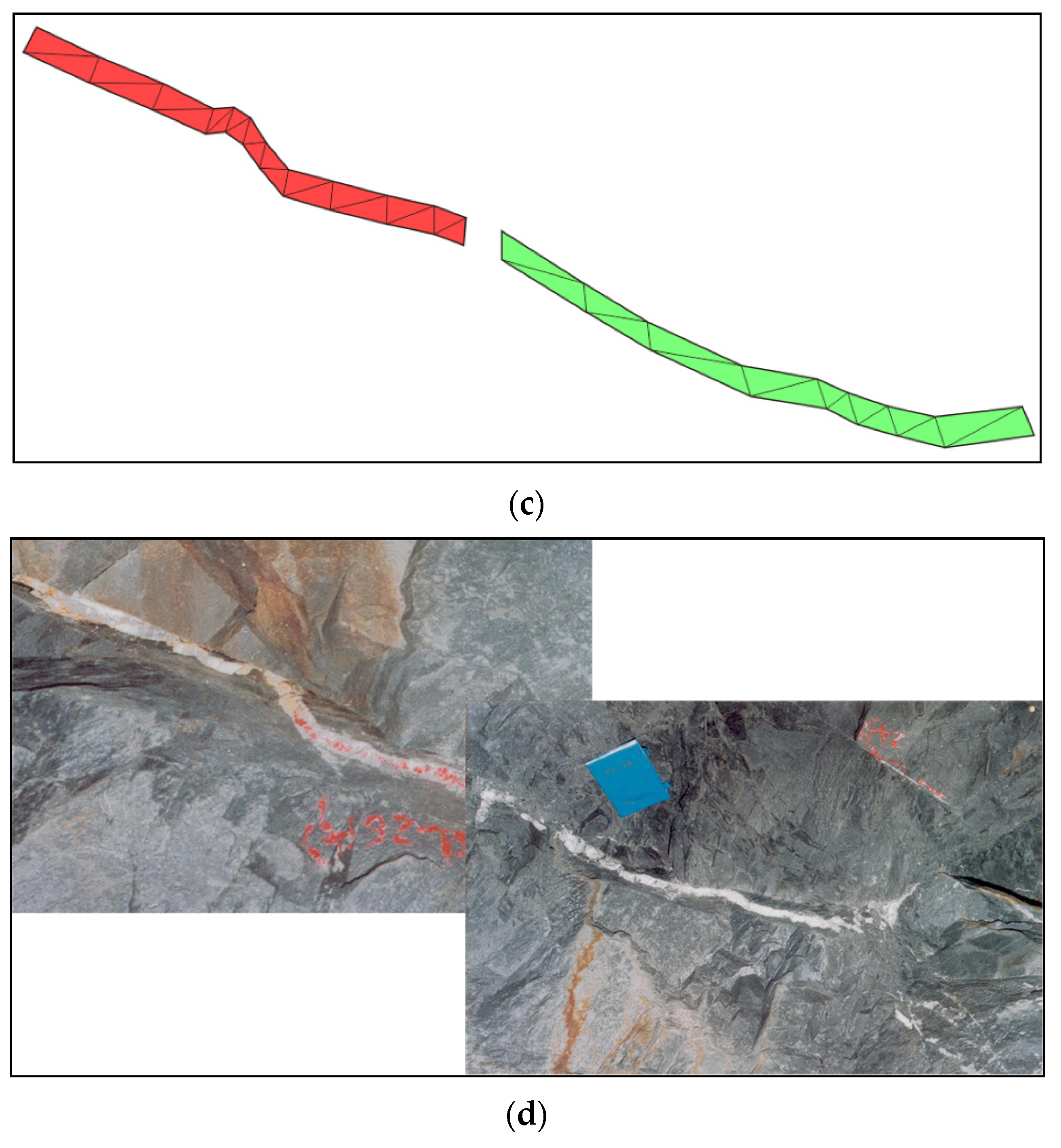
| Hardware | Specifications |
|---|---|
| CPU | Intel® Core™ M-5Y10c Processor |
| Memory | 4GB LPDDR3 |
| Display Screen | 1920*1080 |
| GPS | A-GPS |
| Camera | Rear: 5 megapixels; front: 2 megapixels |
| Gyroscope | 3-Axis gyroscope |
| Platform and Components | Details |
|---|---|
| Platform | Microsoft Windows |
| Framework | Net Framework |
| Underlying graphic platform | SuperMap iObject 10i |
| Framework of object-relational mapping | Entity Framework |
| Numerical analysis components | Math.Net |
| Deep learning components | TensorflowSharp |
| Computer vision components | EmguCV |
| Computational geometry components | MIConvexHull |
| Geographic information analysis components | CGAL |
Publisher’s Note: MDPI stays neutral with regard to jurisdictional claims in published maps and institutional affiliations. |
© 2021 by the authors. Licensee MDPI, Basel, Switzerland. This article is an open access article distributed under the terms and conditions of the Creative Commons Attribution (CC BY) license (https://creativecommons.org/licenses/by/4.0/).
Share and Cite
Zhao, W.; Han, S.; Chen, Y.; Gao, Y.; Liu, M. Development of Quick Digital Field Recording and Mapping Method of Geological Objects for Hydraulic Engineering. Appl. Sci. 2021, 11, 9840. https://doi.org/10.3390/app11219840
Zhao W, Han S, Chen Y, Gao Y, Liu M. Development of Quick Digital Field Recording and Mapping Method of Geological Objects for Hydraulic Engineering. Applied Sciences. 2021; 11(21):9840. https://doi.org/10.3390/app11219840
Chicago/Turabian StyleZhao, Wenchao, Shuai Han, Yapeng Chen, Yusheng Gao, and Manjie Liu. 2021. "Development of Quick Digital Field Recording and Mapping Method of Geological Objects for Hydraulic Engineering" Applied Sciences 11, no. 21: 9840. https://doi.org/10.3390/app11219840





